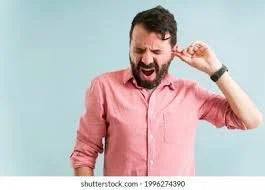EAR WAX REMOVAL
Never use cotton tips to try and remove ear wax: this only pushes the wax further into the canal where it can become impacted. Moreover, the tip may damage your ear canal causing bleeding or infection.
Ear wax is normal. It occurs in 2 general ‘flavours’; soft and yellow or white and flaky. It is a secretion from the ear canal wall. Moving the canal by chewing and other cells lining the wall will ‘waft’ the wax out of the canal. On the way, the wax picks up dead cells, dust, dirt, etc., thus cleaning the ear. It has some anti-bacterial and anti-fungal properties but lubricates the canal to stop it feeling itchy.
This process can slow down if the ear canal is narrow or produces a lot of wax. Hearing aids/shells inserted into the ear can push the wax back down the canal causing impaction and preventing the natural expulsion of the wax. Older wax tends to be hard and dark. At the annual invitation to have a hearing/hearing aid check, we will check your ears, usually with video-otoscopy for excess ear wax.
Removing Wax
Wax removal is performed in 3 general ways, dependent upon many factors. Video-otoscopy is used to see how much wax is in the ear. A headlight or operating microscope is used to illuminate the ear during the removal process. Some of the tools may have their own illumination.
Curettage: fine instruments with scoops, loops or hooks are used to gently ease the wax off the canal wall and guide it out of the ear. Forceps may assist in ‘grabbing’ the wax to pull it out. This is good for firm wax.
Micro-suction: a fine tip attached to a suction pump is guided down the ear canal to either suck up the wax or make a firm contact so that it can be pulled gently out of the ear. Suction can be quite loud in the ear canal. This is good for soft wax and other exudate.
Syringing: water at body temperature is syringed gently into the canal. The tips direct the stream of water to the outside of the canal to avoid pushing the wax in further and ‘flush’ it out into a basin held under the ear. This is not suitable if the ear drum has a hole in it or the ear has been operated on in the past.
At Home Remedies. If you suspect you have impacted wax there are wax treatments available from the pharmacist. These generally break up the wax but you should follow the instructions on the box. These are usually to instil 4 drops, morning and night for 4 days ONLY. If used occasionally, these drops may stimulate wax production! Alternatively, lay down on your side and put a couple of drops of warmed olive oil in the uppermost ear, leaving it to soak in for 5 minutes. Mop up any excess with the rolled-up tip of a tissue as this will not push the wax further into the ear. This lubricates the canal allowing the wax to lift off and come out more easily. Oil can be dropped in occasionally. Please note, all of these actions may cause the wax to expand and block your ear/hearing temporarily. Tackle one ear at a time! If in doubt, book in for a wax review.
Never use a cotton bud or a key or a hair pin in your ear!


